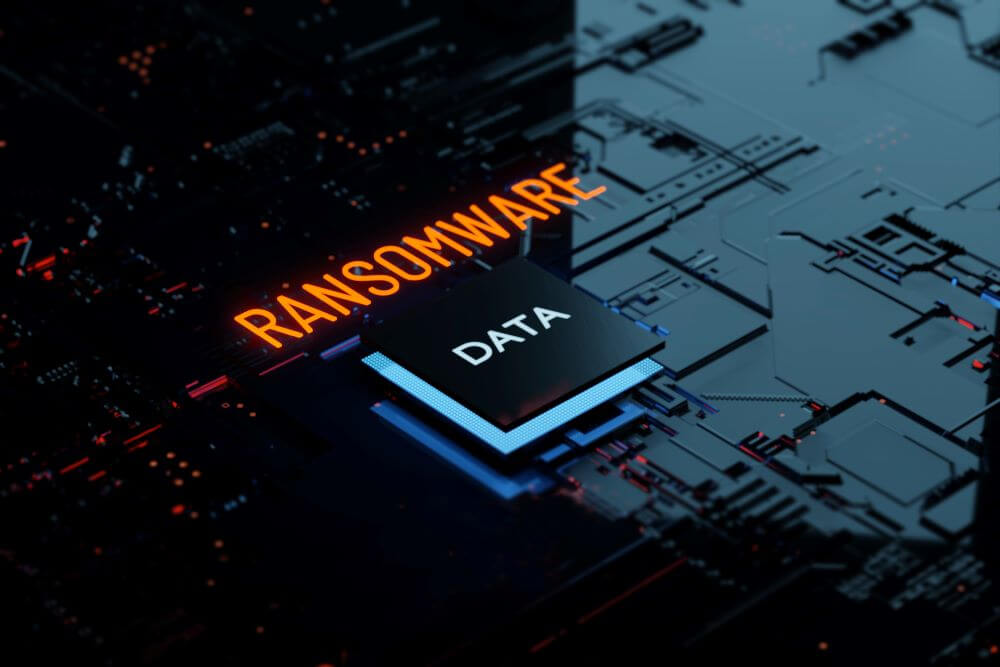Ransomware is one of the most common types of cyberattacks. With how vastly the internet has become embedded in our day-to-day lives, cyberattacks such as ransomware can cause costly disruptions.
According to the Harvard Business Review, the amount of money paid to ransomware hackers increased 300% from 2020 to 2021. This is after ransomware attacks rose 500% the previous year.
But learning more about ransomware can help protect yourself from becoming a victim.
What is Ransomware?
Ransomware is a type of cyberattack used by hackers to extort a “ransom” from their victims. Malicious software infects your computer and restricts access to your files and networks.
The cyberthief then demands a certain amount of money for you to regain access to your data. However, as you are dealing with cyber criminals, there are no guarantees that the hackers will restore access once you have paid the amount.
Over time, ransomware attacks have grown to become more complex and dangerous. Some examples of well-known ransomware attacks are as follows:
Cloudstar
Last year, Cloudstar was the victim of a ransomware attack. The attack and subsequent blockage of Cloudstar’s system meant homebuyers waiting to close on their new home purchases were affected while third-party forensics experts attempted to recover their data.
City of Atlanta
Atlanta was the victim of a ransomware attack. The attack included infecting the city’s system with malware and grinding the city’s services to a halt.
Atlanta officials ended up paying the $50,000 ransom demand and paid millions in their data recovery efforts.
How Does Ransomware Work?
Hackers use malware in the form of an email, a clickable link, an online advertisement, or a website to lure victims in. Once your computer has become infected with the malware, your data is encrypted, and you cannot gain access to it.
The severity of the attack depends on the kind of malware that has infected your computer. It can range from between a few files and folders, the computer itself becoming encrypted, to external drives and networked computers.
In most cases, the victim is unaware that their computer is infected unless they try to access the restricted files; or get a prompt demanding ransom.
Why is Ransomware Spreading?
Unfortunately, ransomware attacks continue to spread because they are more accessible and inexpensive for cybercrimes to pull off. Plus, more people working from home encourages more of these attacks.
Popular Ransomware Variants
Let’s look at the four types of Ransomware listed below to understand better.
Ryuk
Ryuk is usually done by phishing emails or compromised logins to lock sensitive files until a ransom is paid. Ryuk typically targets businesses, hospitals, and other organizations.
Maze
The Maze ransomware is known for encrypting files and stealing them. If demands aren’t met under this ransom, sensitive information is exposed or sold off.
REvil (Sodinokibi)
The REvil (also known as Sodinokibi ) is a filing-blocking virus that encrypts sensitive files after infection and holds them hostage.
DearCry
DearCry sends a ransom message with instructions for the user to email the ransomware operators to learn how to decrypt their files.
Who is at Risk of Ransomware?
Any device connected to the internet is at risk of becoming the next ransomware victim.
Ransomware scans a local device and any network-connected storage, which means that a vulnerable device also makes the local network a potential victim.
How to Defend Against Ransomware
Ransomware can result in breaches of confidential information, data loss, work disruption, and financial loss due to damages. However, simple tips can help defend yourself from malicious software and cyberattacks.
These include:
- Keeping all applications, software, and operating systems up to date
- Downloading and browsing content only on trusted sites
- Downloading anti-virus and anti-malware software, running regular scans, and keeping them up to date
- Not opening emails or clicking on links sent through dubious unknown accounts
- Regularly creating and securing backups of all your data
- Having a robust continuity and contingency plan for your business in case of such attacks
Ransomware is, unfortunately, a common type of cyberattack. Hackers use different methods to infect your computer with malicious software that encrypts your data and restricts your access.
Although new cybersecurity tools and anti-malware software provide some security against such attacks, it is always better to be careful on the internet to help avoid becoming a victim of ransomware.
How to Remove Ransomware
While you can remove ransomware, it can be a challenging process. Here are some ways you can remove ransomware.
- Keep your computer on. Turning the computer off could cause you to lose more files and lower your chances of recovery.
- Wipe and restore your computer using the most recent data and applications. But before you do this, ensure you have wiped out the ransomware.
- Don’t respond to a ransom message. If you respond to the message, it reveals to the hacker their ransomware attack was successful. Plus, there’s no guarantee that a hacker will give back your data.
How to Report Ransomware
Ransomware is a severe crime with strict laws in place to punish perpetrators. If you are a victim of a ransomware attack, you must report the incident as soon as possible. You can report such incidents through:
- Your local law enforcement office
- Internet Crime Complaint Center (IC3)
- Cybersecurity and Infrastructure Security Agency (CISA)
- U.S. Secret Service Field Office
- National Cyber Investigative Joint Task Force
Once you have contacted one of the departments mentioned above, the appropriate authorities can help you deal with your case, retrieve your data, and attempt to apprehend the criminals.
If you need extra protection after a ransomware attack, consider signing up for identity theft protection. IdentityIQ identity theft protection plans offer real-time monitoring and fraud alerts so you can act quickly to recover your identity and your data.

